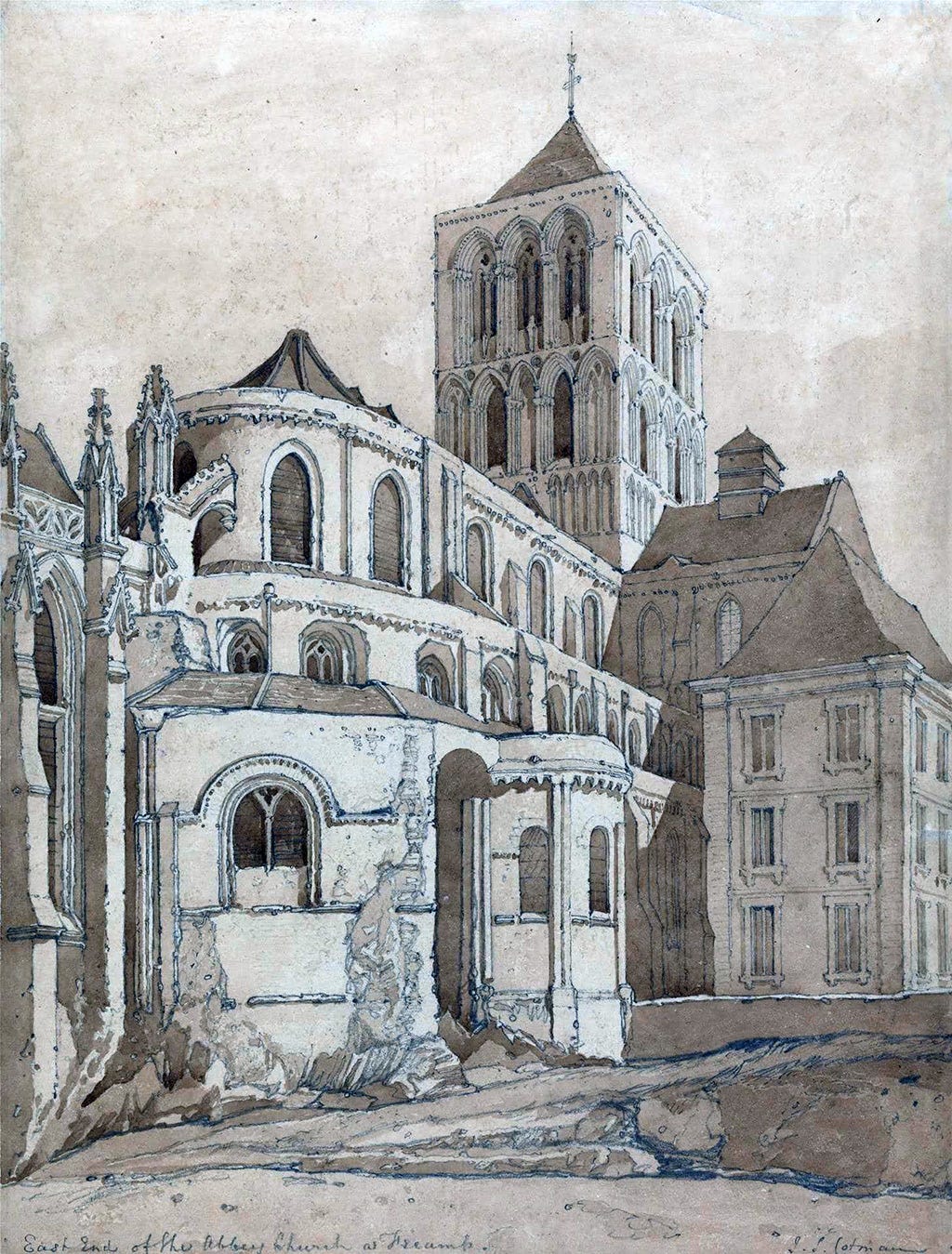John Sell Cotman, born in 1782 in Norwich, England, was a significant figure in the Romantic movement, particularly known for his watercolor landscapes. He was associated with the Norwich School of painters, an important regional art movement. Cotman’s art is characterized by a refined, delicate style, with a focus on the structure and form of landscapes. He had a restrained color palette and often balanced natural representation with a more abstract interpretation.
Cotman traveled extensively, notably to Yorkshire and Normandy. His trips to Normandy resulted in a remarkable series of architectural studies, which are considered some of his finest works. While his watercolors are celebrated, Cotman also worked with oils and etchings. He taught at King’s College School in London for many years, contributing to the education of the next generation of artists.
Despite his considerable talent, Cotman struggled financially throughout his life, and his work was not fully appreciated during his lifetime. He died in 1842, but his reputation grew posthumously, and he is now recognized as one of the great English landscape painters.
TODAY: The Holy Trinity Abbey of Fecamp still exists today, and the church can be visited. The church has been amalgamated with the Fecamp City Hall.
These were the two paintings Cotman made in Fecamp that we were able to find.







